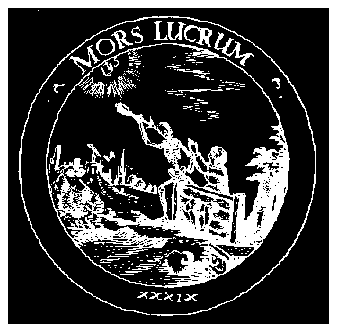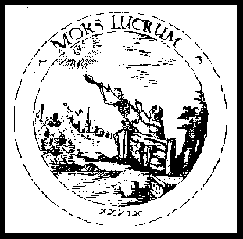de Mort Violente
J. Bruller
(Self-published --- Paris)

The portrait of a man making off by excès hydraulique is extremely engaging. Spread out comfortably on the floor of a wine vault, he has a large funnel in his mouth, and into the funnel runs a ruddy stream of what appears to be excellent claret. He is already half-dead: his clothes have burst, and his face is excessively flushed. But what remains of it there is a noble smile.
In the United States there are fashions in suicide, as there are in hats, drinks and religions. When I was a young reporter fully half of the world-weary brothers and sisters whose exitus I chronicled employed carbolic acid. They would be brought to hospital with their faces bloated, and suffering great pain. Many of them lingered for days, and then passed out doubled up into knots.
There followed the vogue of bichloridc of mercury. So popular did the little green tablets become among the despairing that the legislators of many States forbade their public sale, and to this day, in those States, anyone who wants to buy them for a legitimate purpose must sign all sorts of documents and submit to a formidable cross-examination. Their prohibition, of course, did not diminish suicide in the slightest. The candidates for bliss eternal simply turned to other poisons, or to the rope, the pistol, or the butcher-knife.
M. Bruller lists suicide by breathing carbon monoxide, but he is apparently aware of but one method of producing the monoxide, and that is by burning charcoal. I knew a man who made enough of it for his purpose by going into his garage, shutting the doors, and then setting his automobile engine to spinning. In half an hour he was an angel. But there is some uncertainty about this scheme: the garage-doors may leak, and so dying may be a slow and laborious business, as it is when it is produced by gallstones or arteriosclerosis.
Years ago, I was friendly with a German saloonkeeper in Baltimore who went to extraordinarily elaborate pains to make it swift and sure: his racial efficiency maintained itself unimpaired to his last breath. The scene of his dissolution was a bridge spanning a shallow river. He first fastened a rope to the bridge-rail and then wound the other end around his neck in a hangman's knot. Then he took a large dose of strychnine, mounted the bridge-rail, and shot himself through the temple. Then he plunged into the water. When the police reached him in rowboats he was poisoned, shot, drowned and hanged. It was years before his widow could find a second husband. Such desperation points its unescapable morals.
 M. Bruller does not discuss the theological objections to suicide. Like all things theological, they are instructively idiotic. They are based on the theory that it is somehow offensive to God to come into His presence without invitation. But what of refusing to appear when invited? What has theology to say of the man who, coming down with diatetes, takes insulin? I'd like to hear a couple of archbishops on that. Meanwhile, M. Bruller's interesting work deserves to be done in English. If I were the editor of a tabloid newspaper, I'd have it translated at once, and circulate it gratis.
M. Bruller does not discuss the theological objections to suicide. Like all things theological, they are instructively idiotic. They are based on the theory that it is somehow offensive to God to come into His presence without invitation. But what of refusing to appear when invited? What has theology to say of the man who, coming down with diatetes, takes insulin? I'd like to hear a couple of archbishops on that. Meanwhile, M. Bruller's interesting work deserves to be done in English. If I were the editor of a tabloid newspaper, I'd have it translated at once, and circulate it gratis.